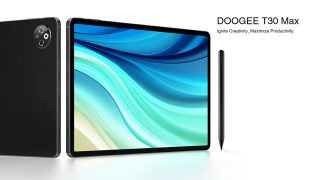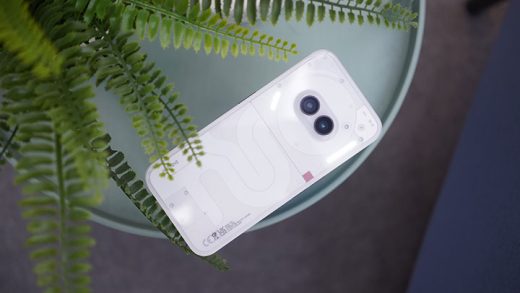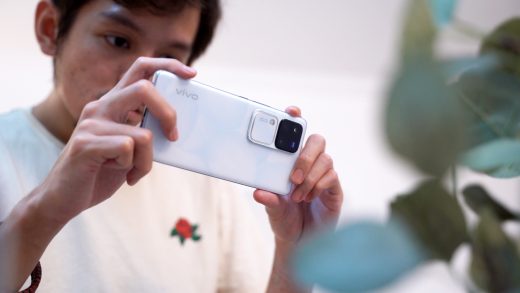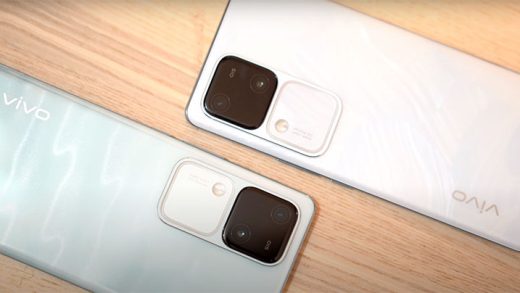Fresh from our House Session at MWC, we were invited by Netflix to visit their headquarters in Los Gatos, California.
The familiarization tour will show us around the main campus, explain the technology and processes done from the background and witness the war room when they globally release Marvel’s Iron Fist.

View from the 16th floor patio of the Dolby Labs building in San Francisco.
Our first stop on day one is the Dolby Labs in downtown San Francisco. The tour familiarized us with the partnership of Netflix and Dolby to bring better picture quality to their streaming service.
From Lens to Living Room
There is a lot of art and science involved in streaming a movie or TV series to your home or mobile device and Netflix is one of the biggest content and technology company that innovates in this space.
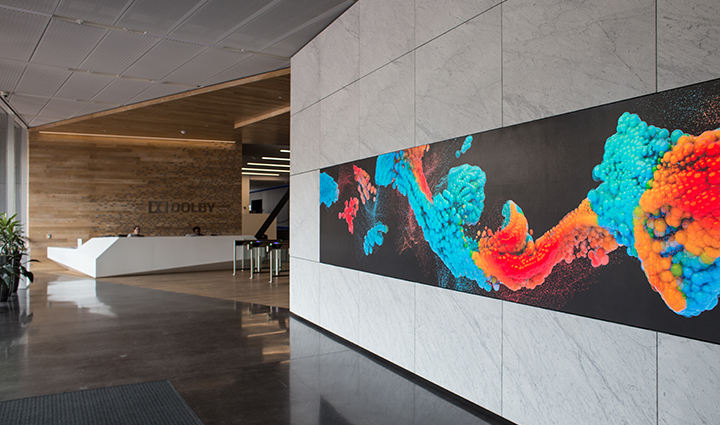
At the lobby of Dolby Labs. That’s the “Ribbon Wall”, a 60-foot video wall.
Our two-day trip to Netflix HQ in Los Gatos, California and Dolby Labs in downtown San Francisco gave us a quick glimpse on the behind-the-scenes on the post-production and the technology involved to get the best picture at the lowest possible bit rate to your living room.
In this first of a series of articles, we take you to the Dolby Labs in the heart of San Francisco where movies and Netflix Originals such as the Iron Fist go thru mastering and/or color-grading.
The Mastering Room
This is one of my favorite rooms in Dolby Labs. The Mastering Room is where they tweak the color, temperature and highlights of the movie.
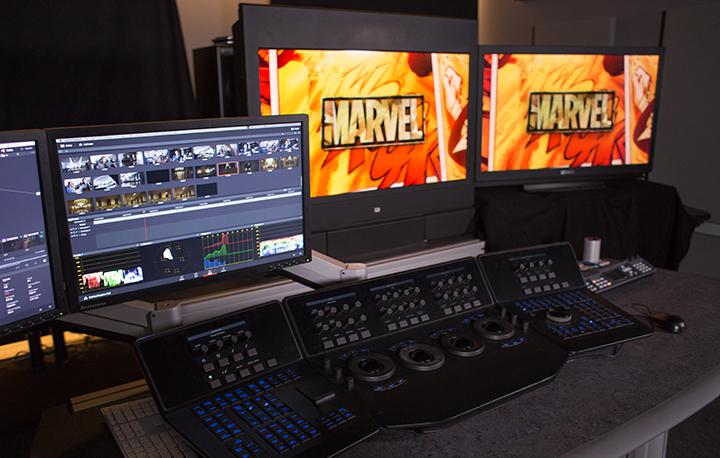
Netflix and Marvel worked with Deluxe’s Encore (a post-production service company) to re-master previous seasons of Marvel series including Marvel’s Daredevil, Marvel’s Jessica Jones and Marvel’s Luke Cage in HDR. The series Marvel’s Iron Fist was mastered natively in HDR format.
“Each of the Marvel shows has its own distinct palette; Daredevil’s is lemon-lime, Luke Cage tends toward orange-brown, and Jessica Jones is cooler overall. For Iron Fist the color direction is clean, white to cyan, to set the tone for this show.” according to Tony D’Amore, Encore Colorist that worked on the Marvel series to re-master them to HDR.

In order to deliver the best picture, each scene will be color-graded and fixed depending on what kind of effect is required.
To ensure accurate monitoring in color grading for Dolby Vision HDR, D’Amore uses a Dolby 4,000-nit Pulsar display alongside a 4K monitor for the SDR color grade. For Netflix streaming, the same data stream informs both HDR and SDR formats, with the encoded Dolby Vision metadata optimizing the resulting image for the viewer’s display, regardless of its brightness, so audiences get an enhanced experience whether they are watching Marvel’s Iron Fist on an HDR TV or not.

D’Amore uses Da Vinci Resolve from Black Magic for color-grading. I’ve personally tried this software before and it requires a high performance machine to even install.
Mastering requires a lot of time and each episode could take as long as 30 hours to color-grade.
The Physiology Lab
One of the questions that was asked by the media during the tour was the whole coloring process might be too subtle or insignificant that viewers will not even notice or care.

Well, this is the reason why they built a Physiology Lab at Dolby. In here, scientists monitors physiological responses of test subjects to the movies that they watch.

They hook up a subject or group into monitoring machines while showing them an entire episode or movie. This includes 16 wireless ECGs, heart rate sensor, sweat sensor, and an infra-red sensor to monitor the skin temperature of the viewer.
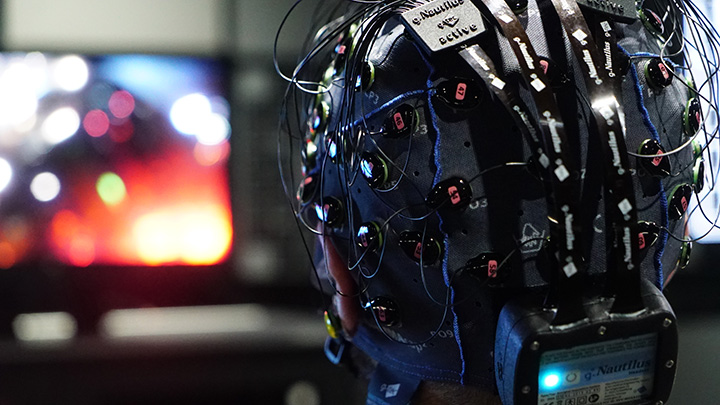
All these physiological responses are analyzed across test subjects and used to further improve the mastering process.

And they’ve gotten very interesting observations. In one test scenario, the facial temperature of the viewer shot up during a fire explosion scene. The fire was so realistic and the colors transmitted signals to the brain that interpreted it as if it was a real explosion in front of the subject.
SDR vs HDR on Mobile
With the LG G6 being the first smartphone to support Dolby Vision, users will experience better picture quality. LG’s W7 OLED 4K HDR TV, which is a very thin 3mm wallpaper-like TV, also supports Dolby Vision.
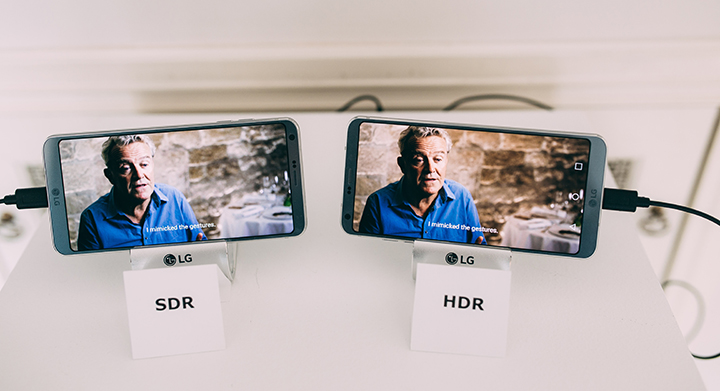
Standard Dynamic Range vs. High Dynamic Range on the LG G6
The difference between a standard dynamic range and high dynamic range display is very obvious — the colors pop out, details are more noticeable and the high contrast gives you the ability to see things you couldn’t see before.
This year, more and more devices will support HDR and Dolby Vision, starting with TVs and flagship smartphones like the LG G6.
Marvel’s Iron Fist
After the tours and demo, we were all treated to a showing of the first episode of Marvel’s Iron Fist (a day ahead of the global release on Netflix).
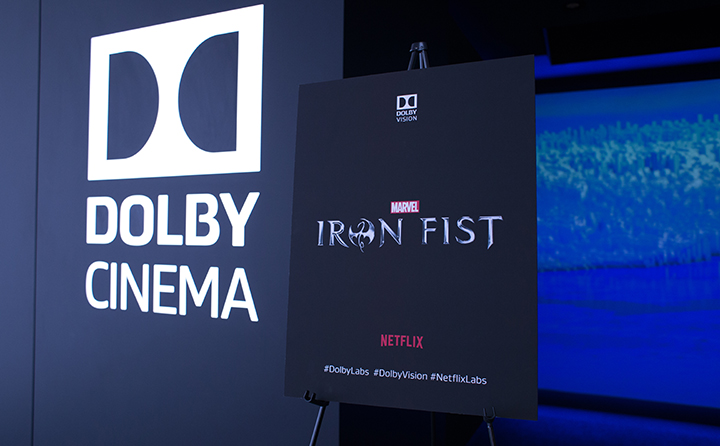
The Dolby Cinema inside the building is a huge, state-of-the-art movie theater that seats around 150 people and features proprietary technologies such as Dolby Vision and Dolby Atmos.
The whole familiarization tour gave us a better understanding on the art and science behind Netflix. Makes us appreciate all that time and effort to bring the best streaming service to our living room and our mobile phones.







